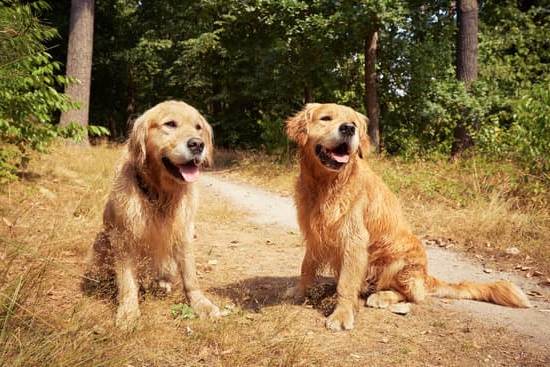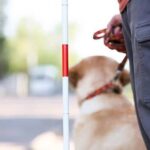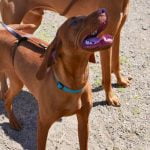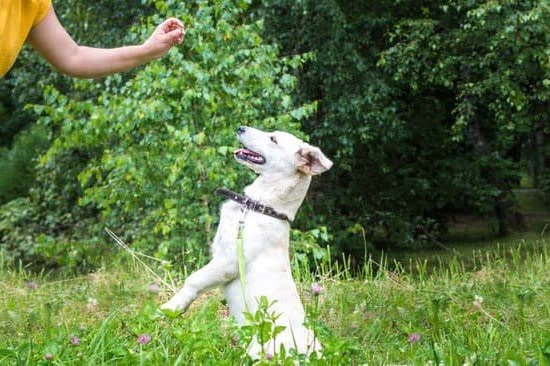Training an older dog to poop outside can be a challenging task, but with the right approach and techniques, it is definitely achievable. As a pet owner, it’s important to understand the unique challenges that come with training an older dog compared to a young puppy. With patience, consistency, and understanding of your dog’s behavior, you can successfully teach your older dog to do their business outside.
When it comes to training an older dog to poop outside, one must first assess the current habits and behavior of the dog. Understanding their routines and potential barriers to outdoor potty breaks is crucial in developing a successful training plan. By observing their patterns and reactions, pet owners can identify areas for improvement and tailor their approach accordingly.
Establishing a consistent routine for potty breaks is essential in retraining an older dog. Dogs thrive on routine and structure, so creating set times for outdoor bathroom breaks can help communicate expectations to the dog. This consistency also helps them develop the habit of going outside rather than indoors. Through positive reinforcement and patience, pet owners can gradually modify their dog’s behavior and encourage them to go potty outside.
Assessing the Dog’s Current Habits and Behavior
Before embarking on the journey of potty training an older dog, it is crucial to assess the dog’s current habits and behavior. Understanding your dog’s existing routines and preferences will help in tailoring an effective potty training plan that suits your dog’s specific needs.
Take note of when and where your dog typically eliminates indoors. Does your older dog have a specific area in the house where they tend to relieve themselves? By identifying these patterns, you can start to anticipate when your dog is most likely to need a potty break, which can then inform your training schedule.
Additionally, pay attention to any cues or signals that your older dog may give when they need to go outside. This could include pacing, sniffing around, or whining. Recognizing these behaviors will allow you to proactively guide your dog outdoors before accidents occur inside.
Furthermore, consider any past experiences with potty training that may have impacted your dog’s current behavior. For example, if your older dog has had a traumatic experience related to outdoor elimination, they may be more resistant to the idea of pooping outside. Understanding these factors can help you approach the training process with empathy and patience.
By taking the time to assess your older dog’s habits and behavior, you can gain valuable insights that will guide you in developing a personalized potty training plan that sets both you and your furry companion up for success. Remember how understanding your older dog’s behavior is crucial in executing an effective potty-training regime by noting their preferences and anticipating their needs priorly.
Establishing a Consistent Routine for Potty Breaks
When it comes to training an older dog to poop outside, one of the most crucial aspects is establishing a consistent routine for potty breaks. This section will provide you with some tips on how to train your older dog to develop a regular schedule for going outside to relieve themselves.
Here are some key steps to consider when establishing a consistent routine for potty breaks:
- Set specific times for potty breaks: Determine the times of day when your older dog typically needs to go potty and try to stick to those times as much as possible. This could include first thing in the morning, after meals, before bedtime, and any other times that your dog shows signs of needing to go outside.
- Take your dog to the same spot: Choose a designated area outside where you want your dog to go potty, and take them there consistently every time. The familiar scent of their previous eliminations will encourage them to go in the same spot each time.
- Use verbal cues: When it’s time for your dog’s potty break, use a specific verbal cue such as “Go potty” or “Do your business.” Consistently using the same cue will help signal to your older dog what is expected of them.
- Be patient and consistent: It’s important to be patient and consistent with the routine you establish. Older dogs may take longer to adjust to new habits, so it’s essential that you remain steadfast in sticking to the schedule.
By implementing these steps, you can help train your older dog to develop a regular routine for going potty outside.
Remember that every dog is unique, and what works for one may not work for another. It’s essential to observe your older dog’s behavior closely and make adjustments as needed. With patience, consistency, and positive reinforcement, you can help your older dog learn how to poop outside.
Utilizing Positive Reinforcement and Rewards
Training an older dog to poop outside can be a challenging task, but it is definitely possible with the right approach and techniques. Utilizing positive reinforcement and rewards can be a highly effective method in encouraging your older dog to consistently potty outside. Here are some tips on how to effectively implement this training technique:
- Use treats: When your older dog successfully poops outside, make sure to reward them with their favorite treats. This will create a positive association with going potty outside and encourage them to repeat this behavior.
- Use praise: In addition to treats, shower your older dog with verbal praise and affection when they eliminate outside. Dogs respond well to positive reinforcement, so giving them praise for their good behavior will further motivate them to continue going potty outside.
- Consistency is key: It’s important to be consistent with the use of rewards and positive reinforcement. Every time your older dog eliminates outdoors, make sure to reward them in the same manner. This consistency will help reinforce the desired behavior.
By consistently utilizing positive reinforcement and rewards, you can effectively train your older dog to understand that pooping outside is a desirable behavior.
Implementing these techniques may take some time and patience, especially when dealing with an older dog. However, staying consistent with positive reinforcement and rewards will eventually lead to success in training your older dog to poop outside. With dedication and persistence, you can help your furry companion develop new habits and behaviors that benefit both of you in the long run.
Addressing Any Underlying Health Issues That May Affect Potty Training
When it comes to training an older dog to poop outside, it’s essential to assess the potential impact of any underlying health issues. In some cases, a dog may have difficulty controlling their bladder or bowels due to medical conditions such as urinary tract infections, diabetes, or arthritis. It’s crucial to consult with a veterinarian to rule out any health concerns that may be affecting your dog’s ability to potty outside.
Once any health issues have been addressed and treated, you can focus on the training process with a better understanding of your older dog’s capabilities. Keep in mind that certain medications or treatments could also affect your dog’s bathroom habits, so monitoring these changes and adjusting the training approach accordingly is important.
In addition to consulting with a vet, a key aspect of addressing underlying health issues in potty training is being patient and observant. Monitoring your dog’s behavior and any signs of discomfort during the training process can help you identify if there are still lingering health concerns that need to be addressed.
| Underlying Health Issues | Impact on Potty Training |
|---|---|
| Urinary Tract Infections | Can cause frequent urination or accidents indoors |
| Diabetes | Increased thirst and urination can make potty training more challenging |
| Arthritis | Mobility issues may make it difficult for older dogs to go outside as needed |
Implementing Effective Training Techniques and Commands
Establishing Clear Communication
When it comes to training an older dog to poop outside, clear communication is essential. Dogs thrive on consistency and routine, so it’s important to establish a clear set of commands and cues for potty training. Use the same verbal cue or command each time you take your dog outside to go potty. For example, saying “go potty” or “do your business” can help your dog understand what is expected of them.
Using Crate Training
Crate training can be a highly effective tool for potty training older dogs. This technique involves using a crate to confine the dog when they are not supervised, as dogs usually do not like to soil their sleeping area. When properly introduced, the crate becomes a safe and comfortable den for the dog. Take your dog outside immediately after letting them out of the crate to reinforce the idea that outside is the designated potty area.
Consistency Is Key
Consistency is crucial when training an older dog to poop outside. It’s important to take your dog out at the same times every day – such as first thing in the morning, after meals, and before bedtime. By establishing a consistent routine, your dog will learn that going potty outside is a regular part of their daily activities.
By implementing these effective training techniques and commands, you can effectively train an older dog to poop outside. Remember, every dog is unique, so it’s essential to be patient and persistent in this process. With time and dedication, you will see progress and eventually achieve success in potty training your older furry friend.
Understanding the Importance of Patience and Consistency
Training an older dog to poop outside can be a challenging task, especially if the dog has developed long-standing habits of going to the bathroom inside the house. It’s important to understand that this process will require patience and consistency in order to be successful. Just like with any form of training, it will take time for your older dog to learn new habits and behaviors.
Set Realistic Expectations
It’s essential to have realistic expectations when training an older dog to poop outside. Understand that it may take longer for an older dog to unlearn ingrained habits and adopt new ones. Be patient with your pet and stay committed to the training process, even if progress seems slow at first.
Consistency Is Key
Consistency is crucial when training an older dog. It’s important to establish a consistent routine for potty breaks, feeding times, and exercise. By providing a predictable schedule, your older dog will know when it’s time to go outside and do their business. This routine will help reinforce the behavior of pooping outside.
Persistence Pays Off
Remember that persistence pays off when it comes to training an older dog. Stay dedicated to the process and remain consistent with your commands and expectations. Celebrate small victories along the way, as these will ultimately lead to success in training your older dog to poop outside.
By approaching the training process with patience and consistency, you can effectively train your older dog to poop outside and enjoy a clean and tidy home environment once again.
Troubleshooting Common Difficulties and Setbacks in the Training Process
When training an older dog to poop outside, there are bound to be some difficulties and setbacks in the process. One common difficulty is that older dogs may have established habits of going to the bathroom indoors, and breaking this habit can take time and patience.
It’s important to understand that older dogs may have physical limitations that make it difficult for them to hold their bladder or bowels for long periods, so accidents may occur even with consistent training.
Another common setback in potty training older dogs is health issues that affect their ability to control their bathroom habits. Conditions such as arthritis or incontinence can make it challenging for older dogs to signal when they need to go outside. In these cases, it’s important to address any underlying health issues with a veterinarian before continuing with potty training efforts.
In order to troubleshoot these difficulties and setbacks, it’s essential to be patient and consistent in your approach. Pay close attention to your dog’s behavior and signals, and adjust your training routine as needed. While the process may take longer with an older dog, it is possible to successfully train them to poop outside with the right techniques and perseverance.
| Difficulty | Troubleshooting Solution |
|---|---|
| Established indoor bathroom habits | Consistent routine, positive reinforcement, patience |
| Health issues affecting bathroom habits | Veterinary assessment, adjusted training routine |
Celebrating Success and Maintaining a Successful Potty Training Routine
Potty training an older dog to poop outside can be a challenging task, but with patience and the right techniques, it is possible to achieve success. Once your dog has mastered the art of doing their business outside, it’s important to celebrate this achievement and maintain a successful potty training routine.
After putting in the effort to train your older dog to poop outside, it’s essential to continue reinforcing their good behavior. Celebrate their success by praising them and giving them treats each time they go outside to do their business. This positive reinforcement will help solidify their understanding that pooping outside is the desired behavior.
In addition to celebrating success, maintaining a successful potty training routine for your older dog is crucial. This means continuing with consistency in scheduled potty breaks, using the same commands and techniques that have proven effective, and being patient throughout the process. Remember that every dog is different, so it’s important to tailor your approach based on your pet’s individual needs and behaviors.
With time and dedication, even an older dog can learn how to poop outside with proper training techniques. If you’re still experiencing challenges with this process, consult a professional trainer or veterinarian for additional guidance on how to train an older dog to poop outside.
Frequently Asked Questions
How Do I Get My Older Dog to Go Potty Outside?
Getting an older dog to go potty outside may require patience and consistency. Start by taking them out frequently, especially after meals or naps, and using positive reinforcement when they do their business outdoors.
Are Older Dogs Harder to Potty Train?
Generally, older dogs may find it harder to learn new habits, including potty training. This could be due to physical limitations or simply being set in their ways. However, with patience and understanding, it’s still possible to potty train an older dog.
How Do I Retrain My Dog to Poop Outside?
If your dog has regressed in their potty training, it’s essential to retrain them patiently as if they were a puppy. Take them outside frequently and praise them when they go potty in the right place. Consistency and positive reinforcement are key in this process.

Welcome to the blog! I am a professional dog trainer and have been working with dogs for many years. In this blog, I will be discussing various topics related to dog training, including tips, tricks, and advice. I hope you find this information helpful and informative. Thanks for reading!





